Kelly Jensen's Blog, page 99
November 6, 2014
This Week at Book Riot
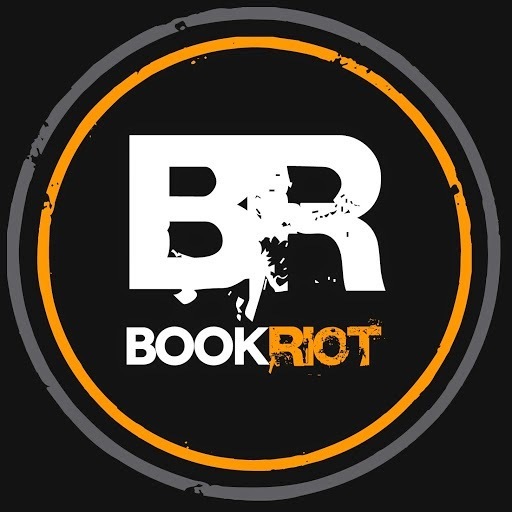
This week over at Book Riot . . .
I talked about teens who have parents that are writers for 3 On A YA Theme.







 Related StoriesThis Week at Book RiotThis Week at Book Riot . . .
Related StoriesThis Week at Book RiotThis Week at Book Riot . . .
Published on November 06, 2014 22:00
Good Girls, Bad Girls, Real Girls: WLA Presentation
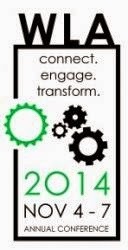
Yesterday, I presented with author Carrie Mesrobian at the Wisconsin Library Association's annual conference up in the Dells. We talked about teen girls in YA fiction and in the library to a full room of librarians who were really excited to talk with us about this topic. We started out asking for names of strong female characters in YA and got a nice response -- then we flipped the switch and asked what the hell "strong female character" even meant. We had a great conversation about how we define strong female characters in YA and how names of heroines in fantasy or science fiction come to mind quicker than those in realistic YA.
Perhaps the best quote was one Carrie tossed out when we were talking about how today's teens read and how they think about their reading: where we as adults are trying to program the VCR, today's teens are already streaming the content they want and like.
Rather than try to box teens in, it's our job as adults who work with teens or who care about them to continue giving them diversity and to quit thinking about them and their interests in binary ways. They don't think that way, and we shouldn't either.
For those who attended and asked about our presentation -- or those who are interested in it -- here's a link to the Prezi. The books we talked about are included with covers, and you can zoom in as much as you need to to grab titles/authors. There are links to a couple of surveys of teen girls, as well. I'm happy to answer any questions or for those who attended and can't remember the name of one of the books we talked about, I'm happy to help out.







 Related StoriesKid Lit Con 2014, Sacramento: The RecapOn Girls, Girl Reading, and Girls in YA Fiction Beyond STACKEDA Whirlwind Trip to PLA 2014, "About the Girls," + Other Musings
Related StoriesKid Lit Con 2014, Sacramento: The RecapOn Girls, Girl Reading, and Girls in YA Fiction Beyond STACKEDA Whirlwind Trip to PLA 2014, "About the Girls," + Other Musings
Published on November 06, 2014 14:26
November 5, 2014
YA Review Round-up: 100 Sideways Miles, Tell Me Again How A Crush Should Feel, and Press Play
I've come to realize that I can either write lengthy reviews and read fewer books or I can read more books and post fewer reviews. I don't think I have to choose one over the other. I've found there's a need to just strike some good balance between the two, meaning that when I'm in the mood to just read, then I need to do that and when I'm in the mood to really dig into the books I'm reading, then I need to just do that.
I'm putting together a couple of review round-up posts for recent reads to talk up some of the things I have been reading. There's nothing thematically similar about these books, other than they're all titles I've read recently and are worth talking at least a little bit about.
 My experience with Andrew Smith's books are a mixed bag. Sometimes, I love them and sometimes, they're really not my thing at all. I found Grasshopper Jungle to fall into the "not my thing at all" category this year, especially as I felt that the way females were depicted in the story was problematic. I don't expect a book that's through the eyes of a teen boy to always be perfectly respectful to female characters -- that's unrealistic -- but when every female in the story has some kind of problem or is depicted as merely there as a side item, it starts to grate on me.
My experience with Andrew Smith's books are a mixed bag. Sometimes, I love them and sometimes, they're really not my thing at all. I found Grasshopper Jungle to fall into the "not my thing at all" category this year, especially as I felt that the way females were depicted in the story was problematic. I don't expect a book that's through the eyes of a teen boy to always be perfectly respectful to female characters -- that's unrealistic -- but when every female in the story has some kind of problem or is depicted as merely there as a side item, it starts to grate on me.
Enter 100 Sideways Miles.
The story centers on Finn and his experience as an epileptic. Or, well, it's less about his experience as an epileptic as his experience being a teen boy trying to figure out what's next in his life. It so happens he has epilepsy, due to a bizarre accident involving a horse that subsequently killed his mother. Finn's goal at the end of this school year is to travel outside California with his best friend Cade. They want to check out a potential college in Oklahoma together.
In the interim, a new girl moves to town and quite literally meets Finn as he's in the midst of a seizure. It's completely embarrassing to him to have the new girl -- who he can't help but have his eyes on out of curiosity, if not more -- walk in on him like that. But Julia isn't fazed by it. In fact, it's that event that brings them together and forges a satisfying relationship between the two of them. Smith offers up a solid female character in Julia, but more than that, he shows a really great romantic relationship between the two that feels real and more, feels real to who Finn is.
But this isn't really about the romance. This is a book about guy friendship and about figuring out the questions of "what's next" in life. I'd call this a straight up adventure story, especially in the second half, and it's the kind of adventure story that seems to be lacking in YA. It's two guys, on the road, figuring out not just who they are, but how they can solve big problems outside themselves while they're on the road. 100 Sideways Miles also features what readers have come to expect out of Smith's writing: it's not necessarily straightforward and there are plenty of straight-up weird and bizarre plot elements. But those are part of the story and make sense within it. This is a much more accessible and, I think, enjoyable read than Grasshopper Jungle was this year. It features a diverse cast and a really authentic look at male friendship.
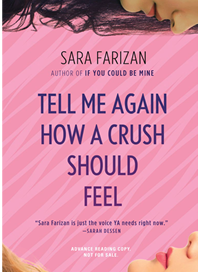
Tell Me Again How A Crush Should Feel is Sara Farizan's sophomore novel, and it repeats some of the same writing-related things that I found didn't work for me in her first book, If You Could Be Mine. In Tell Me Again, main character Leila -- who is Iranian -- has never had a crush before. It's something she is almost a little proud of, or at least it's something she'd be more proud of if it weren't for the fact this is because she's a lesbian. Her parents, who are strict and religious, can't know about this, as they have very high expectations of her to follow the straight-and-narrow in the same way her older sister is. Leila feels the pressure, even if she doesn't necessarily pursue it.
When new girl Saskia comes to Leila's school, though, suddenly, she finds herself falling. Saskia is gorgeous and she appears to be very open and honest about her feelings. Leila can't believe that someone as attractive and cool as Saskia could be the kind of girl she'd be able to call a girlfriend. Between their getting together after school, their intimate moments in a dressing room, and their shared kisses, it feels all but certain Leila now has her first real girlfriend. How will she tell her friends? Can she tell them? And what about her parents?
It's not what it seems though, and Saskia isn't the cool girl or girlfriend Leila thought her to be. She's taken huge advantage of Leila and her naivety, leaving her hurt and confused. But when a long-time friend reenters the picture, perhaps things aren't as bad as Leila thinks they are. And maybe, just maybe, she'll be able to come out to her parents.
The writing in this one drags a bit and there are times where info dumps not only slow the pacing but they also sometimes seem to contradict themselves. We don't get a super clear picture of any of the characters -- including Leila -- though Farizan does an outstanding job rendering Saskia as a toxic, manipulative girl who uses others for her own gain. At times, little to nothing happens in the story, and I felt like this moments deserved some higher stakes, both for the plot and for the characters so they could be more rounded and clearly depicted. I also wish there'd been a little more economic diversity within the story; this was a book featuring a lot of privileged characters and after a while, reading that got to be a little too much.
Tell Me Again reads younger than a lot of YA out there, which isn't necessarily a bad thing. While there's talk of sex and there's drinking, I think this would be an okay book to hand to more mature middle school readers, as well as younger high schoolers.
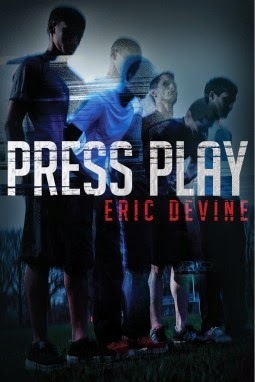 If you're looking for a book that's a hard look at "dude culture" -- something perhaps not explored as much as it should be in YA -- then Eric Devine's Press Play should fit pretty well.
If you're looking for a book that's a hard look at "dude culture" -- something perhaps not explored as much as it should be in YA -- then Eric Devine's Press Play should fit pretty well.
Greg Dunsmore has earned the nickname "Dun the Ton" because he's a big guy. A very big guy. But he's using this as an opportunity to develop a film to gain him admission into a top film school. His plan is to film himself through intense weight-loss workouts, as well as the sort of bullying and teasing he gets for his body.
When he's doing his workout in the weight room after school, he accidentally overhears and oversees something going on with the lacrosse team. It looks and sounds like bullying and hazing on a level he can't stomach. He doesn't have quite the solid proof that he'd like to to turn this into something bigger, but Greg knows now he has to pursue what it is he thinks is going on in order to shed light into the brutal hazing culture at his school. It's not easy, and he's not above seeing further bullying for what he's trying to do, but Greg understands this is beyond him . . . even if he is also aware this could be an opportunity for his own future, too.
Devine's book is a fast-paced, adrenaline-fueled book along the lines of Joshua Cohen's Leverage. While there's not a lot new offered to the fat kid being bullied angle in the story, Greg is authentic and honest in a way that many of these kinds of stories don't allow their main characters to be. He's not a perfect character, and his flaws are what make him a character worth following. Because he's sometimes unlikable, stubborn, and frustrating to readers and to those who care about him, he's almost the exact right person to be attempting to out the hazing going on with the lacrosse team. He doesn't start out with an agenda, and when he decides he does have to pursue this, his dedication to it becomes something that both impresses and annoys those around him.
At times, Press Play went a little long and it could have maintained its intensity with a little tighter editing, but this is the kind of realistic YA that should appeal to both teen boys and teen girls who are interested in unflinching, stomach-twisting looks at the underbelly of high school and high school athletic culture. It's a story that's exceptionally timely and, unfortunately, exceptionally timeless.






 Related StoriesGuest Review: The Silence of Six by E. C. MyersA Few Cybils Reads - Part IVReview & Giveaway: Loop by Karen Akins
Related StoriesGuest Review: The Silence of Six by E. C. MyersA Few Cybils Reads - Part IVReview & Giveaway: Loop by Karen Akins
I'm putting together a couple of review round-up posts for recent reads to talk up some of the things I have been reading. There's nothing thematically similar about these books, other than they're all titles I've read recently and are worth talking at least a little bit about.
 My experience with Andrew Smith's books are a mixed bag. Sometimes, I love them and sometimes, they're really not my thing at all. I found Grasshopper Jungle to fall into the "not my thing at all" category this year, especially as I felt that the way females were depicted in the story was problematic. I don't expect a book that's through the eyes of a teen boy to always be perfectly respectful to female characters -- that's unrealistic -- but when every female in the story has some kind of problem or is depicted as merely there as a side item, it starts to grate on me.
My experience with Andrew Smith's books are a mixed bag. Sometimes, I love them and sometimes, they're really not my thing at all. I found Grasshopper Jungle to fall into the "not my thing at all" category this year, especially as I felt that the way females were depicted in the story was problematic. I don't expect a book that's through the eyes of a teen boy to always be perfectly respectful to female characters -- that's unrealistic -- but when every female in the story has some kind of problem or is depicted as merely there as a side item, it starts to grate on me.Enter 100 Sideways Miles.
The story centers on Finn and his experience as an epileptic. Or, well, it's less about his experience as an epileptic as his experience being a teen boy trying to figure out what's next in his life. It so happens he has epilepsy, due to a bizarre accident involving a horse that subsequently killed his mother. Finn's goal at the end of this school year is to travel outside California with his best friend Cade. They want to check out a potential college in Oklahoma together.
In the interim, a new girl moves to town and quite literally meets Finn as he's in the midst of a seizure. It's completely embarrassing to him to have the new girl -- who he can't help but have his eyes on out of curiosity, if not more -- walk in on him like that. But Julia isn't fazed by it. In fact, it's that event that brings them together and forges a satisfying relationship between the two of them. Smith offers up a solid female character in Julia, but more than that, he shows a really great romantic relationship between the two that feels real and more, feels real to who Finn is.
But this isn't really about the romance. This is a book about guy friendship and about figuring out the questions of "what's next" in life. I'd call this a straight up adventure story, especially in the second half, and it's the kind of adventure story that seems to be lacking in YA. It's two guys, on the road, figuring out not just who they are, but how they can solve big problems outside themselves while they're on the road. 100 Sideways Miles also features what readers have come to expect out of Smith's writing: it's not necessarily straightforward and there are plenty of straight-up weird and bizarre plot elements. But those are part of the story and make sense within it. This is a much more accessible and, I think, enjoyable read than Grasshopper Jungle was this year. It features a diverse cast and a really authentic look at male friendship.

Tell Me Again How A Crush Should Feel is Sara Farizan's sophomore novel, and it repeats some of the same writing-related things that I found didn't work for me in her first book, If You Could Be Mine. In Tell Me Again, main character Leila -- who is Iranian -- has never had a crush before. It's something she is almost a little proud of, or at least it's something she'd be more proud of if it weren't for the fact this is because she's a lesbian. Her parents, who are strict and religious, can't know about this, as they have very high expectations of her to follow the straight-and-narrow in the same way her older sister is. Leila feels the pressure, even if she doesn't necessarily pursue it.
When new girl Saskia comes to Leila's school, though, suddenly, she finds herself falling. Saskia is gorgeous and she appears to be very open and honest about her feelings. Leila can't believe that someone as attractive and cool as Saskia could be the kind of girl she'd be able to call a girlfriend. Between their getting together after school, their intimate moments in a dressing room, and their shared kisses, it feels all but certain Leila now has her first real girlfriend. How will she tell her friends? Can she tell them? And what about her parents?
It's not what it seems though, and Saskia isn't the cool girl or girlfriend Leila thought her to be. She's taken huge advantage of Leila and her naivety, leaving her hurt and confused. But when a long-time friend reenters the picture, perhaps things aren't as bad as Leila thinks they are. And maybe, just maybe, she'll be able to come out to her parents.
The writing in this one drags a bit and there are times where info dumps not only slow the pacing but they also sometimes seem to contradict themselves. We don't get a super clear picture of any of the characters -- including Leila -- though Farizan does an outstanding job rendering Saskia as a toxic, manipulative girl who uses others for her own gain. At times, little to nothing happens in the story, and I felt like this moments deserved some higher stakes, both for the plot and for the characters so they could be more rounded and clearly depicted. I also wish there'd been a little more economic diversity within the story; this was a book featuring a lot of privileged characters and after a while, reading that got to be a little too much.
Tell Me Again reads younger than a lot of YA out there, which isn't necessarily a bad thing. While there's talk of sex and there's drinking, I think this would be an okay book to hand to more mature middle school readers, as well as younger high schoolers.
 If you're looking for a book that's a hard look at "dude culture" -- something perhaps not explored as much as it should be in YA -- then Eric Devine's Press Play should fit pretty well.
If you're looking for a book that's a hard look at "dude culture" -- something perhaps not explored as much as it should be in YA -- then Eric Devine's Press Play should fit pretty well.Greg Dunsmore has earned the nickname "Dun the Ton" because he's a big guy. A very big guy. But he's using this as an opportunity to develop a film to gain him admission into a top film school. His plan is to film himself through intense weight-loss workouts, as well as the sort of bullying and teasing he gets for his body.
When he's doing his workout in the weight room after school, he accidentally overhears and oversees something going on with the lacrosse team. It looks and sounds like bullying and hazing on a level he can't stomach. He doesn't have quite the solid proof that he'd like to to turn this into something bigger, but Greg knows now he has to pursue what it is he thinks is going on in order to shed light into the brutal hazing culture at his school. It's not easy, and he's not above seeing further bullying for what he's trying to do, but Greg understands this is beyond him . . . even if he is also aware this could be an opportunity for his own future, too.
Devine's book is a fast-paced, adrenaline-fueled book along the lines of Joshua Cohen's Leverage. While there's not a lot new offered to the fat kid being bullied angle in the story, Greg is authentic and honest in a way that many of these kinds of stories don't allow their main characters to be. He's not a perfect character, and his flaws are what make him a character worth following. Because he's sometimes unlikable, stubborn, and frustrating to readers and to those who care about him, he's almost the exact right person to be attempting to out the hazing going on with the lacrosse team. He doesn't start out with an agenda, and when he decides he does have to pursue this, his dedication to it becomes something that both impresses and annoys those around him.
At times, Press Play went a little long and it could have maintained its intensity with a little tighter editing, but this is the kind of realistic YA that should appeal to both teen boys and teen girls who are interested in unflinching, stomach-twisting looks at the underbelly of high school and high school athletic culture. It's a story that's exceptionally timely and, unfortunately, exceptionally timeless.







 Related StoriesGuest Review: The Silence of Six by E. C. MyersA Few Cybils Reads - Part IVReview & Giveaway: Loop by Karen Akins
Related StoriesGuest Review: The Silence of Six by E. C. MyersA Few Cybils Reads - Part IVReview & Giveaway: Loop by Karen Akins
Published on November 05, 2014 22:00
November 4, 2014
Guest Review: The Silence of Six by E. C. Myers
Frequent guest contributor Matthew Jackson - freelance writer, film & book critic, and professional nerd (plus Kimberly's cohabitator) - is back with a review of E. C. Myers' latest book, The Silence of Six. In 2012, Jackson reviewed Myers' Norton-winning Fair Coin for us. He has also written frequently here at Stacked on the subject of horror.
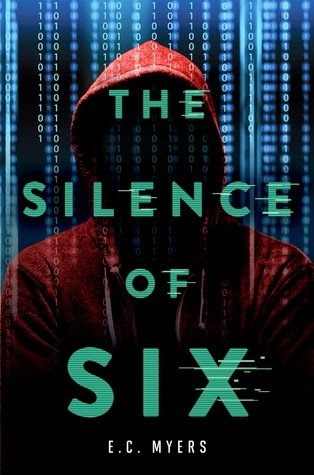 One minute, 17-year-old Max Stein is sitting in his high school auditorium, watching a live presidential debate. The next, he’s watching – along with everyone else in the room – as his friend Evan hacks into the debate’s live video feed and shoots himself after uttering a very cryptic question: “What is the silence of six, and what are you going to do about it?”
One minute, 17-year-old Max Stein is sitting in his high school auditorium, watching a live presidential debate. The next, he’s watching – along with everyone else in the room – as his friend Evan hacks into the debate’s live video feed and shoots himself after uttering a very cryptic question: “What is the silence of six, and what are you going to do about it?”
That this is how the new novel from E.C. Myers – the Andre Norton Award-winning author of Fair Coin, which I loved – opens is compelling enough. That it happens within the first 15 pages of the novel is something I found outright gripping. Myers rockets the story from establishing scenario to brutal catalyst almost immediately, trusting his readers to take his hand and follow him on what will be a bullet-train of a techno thriller. Handled clumsily, this kind of set up might make the reader skittish. In Myers’ hands, though, it sends a message: All will be revealed if you just hang on for the ride.
Because Evan made contact with him shortly before his death, Max is suddenly at the center of a government manhunt, and a conspiracy that he can’t possibly begin to comprehend. Reeling from his friend’s drastic act, and desperate for answers, he must dive back into his own previously abandoned hacker identity, and navigate a complex online world of aliases, back doors, secrets and lies, before it’s too late to find out what Evan really gave his life for.
I remember all-too-well the emotionally harrowing feeling that everything when you’re a teenager, even the most mundane thing, is a high-stakes moment, so I’m a sucker for stories that take that all-or-nothing rollercoaster of adolescence and morph it into an adventure where the stakes actually are high. In the world of The Silence of Six, the secrets teenagers harbor really are worth dying and killing for. The government really is out to get you. Every keystroke really can be watched over by someone else. This is a world of whispers and codes and masks, both physical and virtual, a world where you sometimes have to lie and steal to survive another day, a world where the truth could mean permanent silence. It’s got all the trappings of a government conspiracy blockbuster, but instead of a renegade cop or a paranoid reporter, a handful of resourceful teenage hackers are in the driver’s seat, and that makes it all the more engaging.
One of the things I found most impressive about Fair Coin was Myers’ ability to simultaneously deliver the goods we’ve come to expect from a story of that kind, and subvert those expectations. He does it again with The Silence of Six. It’s a techno-conspiracy-cyber-thriller, with everything that implies. It’s a search for the truth, a story about making it to the center of this knot of secrets no matter what, and to that end it’s a breathlessly entertaining page-turner that darts artfully forward from page one and never lets up. But that doesn’t mean Myers won’t to stop play with some of the conventions he’s working in. His hero is not an action star or an always technically precise supergenius. He’s a gifted, scared kid determined to find whatever right he can in a world that’s just gone wrong for him in countless ways. What looks like it could be a romantic subplot evolves into something else entirely, as Max forms a connection with another hacker that’s built more on personal stakes and, perhaps, a mutual sense of mischief than something romantic. The hacking done by the characters isn’t a few quick keystrokes of brilliance, but rather a series of clever, yet often imperfect, ploys to get to the next clue. The hacking in this story is both messy and satisfyingly geeky, giving it a realism that nerdier readers will happily get lost in. Perhaps most importantly for a thriller, though, the solution to this puzzle is both satisfying and surprising. Even if you actually do think you see the end of this book from a mile away, how Myers and his characters arrive at it, and what happens when they do, still manages to defy a few of the rules set forth by so many stories of this kind.
With The Silence of Six, Myers has again proven his gifts as a storyteller who both celebrates the tropes of genre fiction and wants to pick them apart and stitch them back together into a new creature. It’s a lightning-fast thriller with other, darker themes lurking beneath, and even if you think you’ve read books like this before, it will find a way to surprise you.
Review copy received from the publisher. The Silence of Six is available today.






 Related StoriesA Few Cybils Reads - Part IVReview & Giveaway: Loop by Karen AkinsA Few Cybils Reads - Part III
Related StoriesA Few Cybils Reads - Part IVReview & Giveaway: Loop by Karen AkinsA Few Cybils Reads - Part III
 One minute, 17-year-old Max Stein is sitting in his high school auditorium, watching a live presidential debate. The next, he’s watching – along with everyone else in the room – as his friend Evan hacks into the debate’s live video feed and shoots himself after uttering a very cryptic question: “What is the silence of six, and what are you going to do about it?”
One minute, 17-year-old Max Stein is sitting in his high school auditorium, watching a live presidential debate. The next, he’s watching – along with everyone else in the room – as his friend Evan hacks into the debate’s live video feed and shoots himself after uttering a very cryptic question: “What is the silence of six, and what are you going to do about it?” That this is how the new novel from E.C. Myers – the Andre Norton Award-winning author of Fair Coin, which I loved – opens is compelling enough. That it happens within the first 15 pages of the novel is something I found outright gripping. Myers rockets the story from establishing scenario to brutal catalyst almost immediately, trusting his readers to take his hand and follow him on what will be a bullet-train of a techno thriller. Handled clumsily, this kind of set up might make the reader skittish. In Myers’ hands, though, it sends a message: All will be revealed if you just hang on for the ride.
Because Evan made contact with him shortly before his death, Max is suddenly at the center of a government manhunt, and a conspiracy that he can’t possibly begin to comprehend. Reeling from his friend’s drastic act, and desperate for answers, he must dive back into his own previously abandoned hacker identity, and navigate a complex online world of aliases, back doors, secrets and lies, before it’s too late to find out what Evan really gave his life for.
I remember all-too-well the emotionally harrowing feeling that everything when you’re a teenager, even the most mundane thing, is a high-stakes moment, so I’m a sucker for stories that take that all-or-nothing rollercoaster of adolescence and morph it into an adventure where the stakes actually are high. In the world of The Silence of Six, the secrets teenagers harbor really are worth dying and killing for. The government really is out to get you. Every keystroke really can be watched over by someone else. This is a world of whispers and codes and masks, both physical and virtual, a world where you sometimes have to lie and steal to survive another day, a world where the truth could mean permanent silence. It’s got all the trappings of a government conspiracy blockbuster, but instead of a renegade cop or a paranoid reporter, a handful of resourceful teenage hackers are in the driver’s seat, and that makes it all the more engaging.
One of the things I found most impressive about Fair Coin was Myers’ ability to simultaneously deliver the goods we’ve come to expect from a story of that kind, and subvert those expectations. He does it again with The Silence of Six. It’s a techno-conspiracy-cyber-thriller, with everything that implies. It’s a search for the truth, a story about making it to the center of this knot of secrets no matter what, and to that end it’s a breathlessly entertaining page-turner that darts artfully forward from page one and never lets up. But that doesn’t mean Myers won’t to stop play with some of the conventions he’s working in. His hero is not an action star or an always technically precise supergenius. He’s a gifted, scared kid determined to find whatever right he can in a world that’s just gone wrong for him in countless ways. What looks like it could be a romantic subplot evolves into something else entirely, as Max forms a connection with another hacker that’s built more on personal stakes and, perhaps, a mutual sense of mischief than something romantic. The hacking done by the characters isn’t a few quick keystrokes of brilliance, but rather a series of clever, yet often imperfect, ploys to get to the next clue. The hacking in this story is both messy and satisfyingly geeky, giving it a realism that nerdier readers will happily get lost in. Perhaps most importantly for a thriller, though, the solution to this puzzle is both satisfying and surprising. Even if you actually do think you see the end of this book from a mile away, how Myers and his characters arrive at it, and what happens when they do, still manages to defy a few of the rules set forth by so many stories of this kind.
With The Silence of Six, Myers has again proven his gifts as a storyteller who both celebrates the tropes of genre fiction and wants to pick them apart and stitch them back together into a new creature. It’s a lightning-fast thriller with other, darker themes lurking beneath, and even if you think you’ve read books like this before, it will find a way to surprise you.
Review copy received from the publisher. The Silence of Six is available today.







 Related StoriesA Few Cybils Reads - Part IVReview & Giveaway: Loop by Karen AkinsA Few Cybils Reads - Part III
Related StoriesA Few Cybils Reads - Part IVReview & Giveaway: Loop by Karen AkinsA Few Cybils Reads - Part III
Published on November 04, 2014 22:00
November 3, 2014
A Few Cybils Reads - Part IV
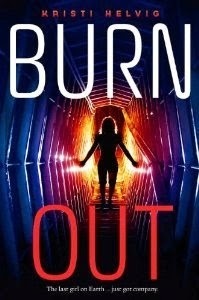 Burn Out
by Kristi Helvig
Burn Out
by Kristi HelvigPart of the reason I love SFF so much - and always have - is how fun it can be. Authors can really let their creativity fly and not worry so much about trivial things like "Could this actually happen?" Burn Out is probably the most fun Cybils nominee I've read so far. It's set 300 years in our future, after an asteroid that was heading for Earth was deflected and hit the sun instead, causing it to advance much more rapidly through its life cycle. It's now a red giant, all the oceans on the planet have dried up, it's too hot to go outside for more than a minute or two at a time, and most humans live underground or in protected pods, using a machine to drag the last bit of moisture out of the air in order to survive. (You could ask me if this could actually happen and I could honestly say I don't know, but my first guess would be "probably not.") Tora lives underground, alone, after her mother and sister were killed by the sun and her father was murdered by the people he worked for after he refused to hand over the powerful weapons he built for them.
Tora has resigned herself to probably ending her own life eventually. The air soon won't have enough water left in it and she figures it will be less painful to overdose on pain pills than die of dehydration. Then an old family "friend," Markus, comes knocking on her door. He says the Earth's leaders have found another planet where humanity can live. He can take her there. The price is her dad's weapons, left in Tora's safekeeping. Tora knows they were made to be used on other humans, which is why her father refused to give them up in the end. Tora says no. Markus leaves, but he returns, and he brings friends. Not the nice kind.
This is an action-packed story, told in Tora's funny, sarcastic voice that kept me flipping through the pages. The plot has a hole big enough to drive a truck through, but that didn't dampen my enjoyment. The setting is unique and the futuristic concepts are interesting, including a gun that can be keyed to a person's particular vibrations, allowing only that person to use it. Each of the characters have ulterior motives, and Helvig teases these out over the course of the story, providing the plot with plenty of twists and turns. Some questions are answered by the end, and some aren't, clearly leaving an opening for a sequel. You can bet I'll be reading it.
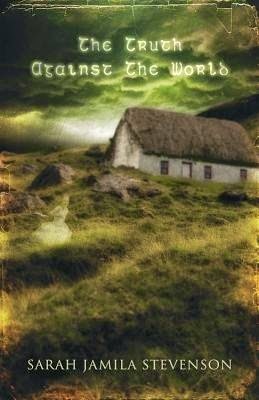 The Truth Against the World
by Sarah Jamila Stevenson
The Truth Against the World
by Sarah Jamila StevensonOlwen Nia Evans, Wyn for short, is moving with her family for a few weeks to Wales, to a little town called Cwm Tawel. The trip is her great-grandmother's dying wish. She grew up in Cwm Tawel and wants to die there, among the peaceful scenery and familiar surroundings. Before the move, Wyn starts to have strange dreams of her great-gran and a little girl, which she blogs about. Another boy, an English boy with his own family ties to Cwm Tawel, stumbles across Wyn's blog after a recent visit to his great-grandfather in Wales, where he found a headstone bearing Olwen's name - and had his own run-in with a strange little girl. The two eventually meet up in Cwm Tawel and set about solving the mystery of the ghost Olwen Nia Evans, which involves digging up painful family history that some residents of the town would prefer stayed buried.
Stevenson's book is unique for its setting; Wales doesn't get a lot of love in the YA world, especially compared to its UK counterparts. I can easily see the descriptions of the country's natural beauty encouraging readers to seek out more information or dreaming about visiting themselves. This is a gentle story, perhaps too gentle, as the stakes never seem very high. The solution to ghost Olwen's mystery is too simple and will be easily deciphered by readers familiar with ghost stories. This would be a good pick for younger, patient readers who may not guess the connection between the ghost and Wyn's great-grandmother from the start. (A pronunciation guide would have also been helpful for the nerdy readers.)
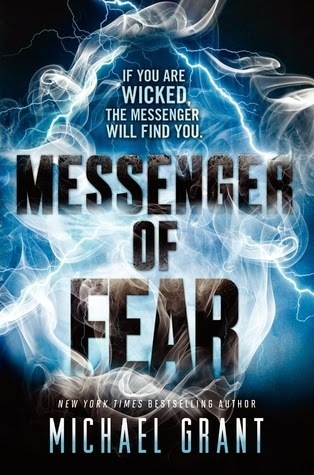 Messenger of Fear
by Michael Grant
Messenger of Fear
by Michael GrantGrant's latest is a series opener, though it stands on its own easily. Mara wakes up without any knowledge of who she is, other than her name. (Yes, it's another amnesia book.) She's greeted by someone who tells her he is the Messenger of Fear, and that before she lost her memories, she agreed to be his apprentice. Their duty is to confront those who have done wrong and present them with a choice: play a game, win it, and go free; or refuse or lose the game and face their worst fear. Messenger starts by showing Mara a teenage girl's suicide, then rewinds time and shows her the events leading up to it. None of the events can be changed, but they must learn from what happened in order to present an appropriate game - and mete out the appropriate punishment if the wicked person loses.
This is not as much of a horror novel as the title or the cover would have you believe, despite a scene where a person is burned alive (described in detail). Fear is not really its goal. Instead, it's more of an exploration of guilt and atonement, of the choices we make and how - if - we can make reparations. The idea behind the Messenger is to restore balance to the universe. Those who have not been punished by a human court must suffer a visit from the Messenger of Fear, in hopes of preventing the wicked from committing the same actions in the future. The situations Mara and Messenger view are realistic and presented with shades of grey. More often than not, multiple people are at fault rather than a single individual. It is left up to the reader to determine if the wrongdoer's interactions with Mara and Messenger have set the balance right - if such punishment is justice or if it's merely cruelty.
There's a twist to the story that sharp readers will see coming, though the hints sprinkled throughout start light and grow heavier as the story progresses. It will take a truly eagle-eyed reader to spot the truth from the beginning, keeping tension high through most of the novel. Picking out the twist before the end isn't always a bad thing, provided it doesn't happen too soon (as I think it would in the book above). There's a certain satisfaction in putting the pieces together yourself over several chapters and then learning you were right in the end. At times gruesome, the book is also thought-provoking and smoothly written, easily absorbed in an afternoon.







 Related StoriesA Few Cybils Reads - Part IIIReview & Giveaway: Loop by Karen AkinsA Few Cybils Reads - Part II
Related StoriesA Few Cybils Reads - Part IIIReview & Giveaway: Loop by Karen AkinsA Few Cybils Reads - Part II
Published on November 03, 2014 22:00
November 2, 2014
Get Genrefied: YA in Translation

We've dabbled in non-genre posts in our "Get Genrefied" series, covering different formats like graphic novels. For this addition to the series, we're going to dig into a category within YA that doesn't fit neatly into one genre, since it includes all genres, and one that doesn't fit nicely into a format, since it can come in a variety of formats. We're talking YA books in translation.
Works in translation for YA make up a very small number of titles published each year, and those which are published through major publishers make up an even smaller portion of those titles. While good numbers of English-written books are sold for translation in other languages, the number of titles published in foreign language and translated into English is tiny. On this post about books in translation at The Girl Who Keeps Reading, she cites a study from Publishing Perspectives that notes 3% of the market for books is works in translation -- that is inclusive, which suggests that the YA books in translation number is similar, if not smaller.
There's also surprisingly little being written about YA works in translation.
YA works in translation contribute directly to the diversity within this category of literature. It opens up perspectives on story and voice. Even the most expertly translated works are expert for a reason: they allow the original author's writing and storytelling to shine through. Though the themes or the appeal of the book may be universal, the magic of reading a title in translation is experiencing that universality. And, perhaps, what makes works in translation even more exciting for many readers is that those voices or ideas can be so divergent from the thoughts or ideas offered in what's published in English. How many of the works in translation in YA dive into a philosophical notion that feels completely foreign or maybe even scary or strange?
It's through exposure to those odd-to-us worlds, though, we build bridges among and across cultures.
In 2006, Roger Sutton posed the question of what makes a good translated book, and publisher Arthur A. Levine weighed in with this:
Wherever they start their lives, we want the books we publish simply to be terrific reads, written by interesting, powerful, affecting writers. And looking overseas (or across borders) is just a matter of making the broadest possible sweep when searching for those talented creators. For me, part of the appeal of looking for great authors to publish in translation is the tantalizing potential in that deep and — for English-language publishers — largely untapped pool of talent out there in the rest of the world. I ask myself, What refreshing new voice, what unique imagination would I find if I could read the very best writers in each country?
One of the interesting elements in this piece is that Levine notes the idea of a book being "too foreign" for an English readership isn't something he takes into consideration. He notes:
I’ve never found such pronouncements that helpful. They remind me of discussions of what boys like. And what girls like. There’s probably some crumb of truth buried in such a discussion, but it’s not a very interesting truth to me, based as it is on stereotypes and least-common-denominator assumptions. What’s really interesting to me is the experience of the real, complex reader.
Another interesting piece from Horn Book, this time from 1999, looks at the task at hand for those who are translators. Cathy Hirano translated Kazumi Yumoto's The Friends, which won the Boston Globe-Horn Book award in fiction, and she talked at length about the different elements that she had to keep in mind with not just Yumoto's book, but what all translators think about when bringing a work into English. It's far more challenging than a straightforward sentence-by-sentence, word-by-word translation:
I must strive to remain true not only to the essence, but also to the style and tone of the writer in the source language while at the same time render it in a way that is understandable to someone from a very different culture and way of thinking. It is a balancing act, requiring sensitivity and intuition, a combination of humility, vigilance, and arrogance. I say humility because as a translator I must be willing to accept that the author comes first, and that even if I don’t agree, or think that I can say it better, the author is always right.
Laura Watkinson, a translator whose work has been recognized by the Batchelder Award, did a fascinating interview with Cynthia Leitich Smith, talking about the good and less-than-good parts of the translation process that hint at maybe why we don't hear as much about YA in translation as we might otherwise:
Reading some reviews, you might think that a book gets magically translated into English at the press of a button in Google Translate.
I think that perhaps the funniest – you have to laugh – review of a translated book I ever saw included a great long list of facts at the beginning, including the name of the author (of course), publisher (yes), price (okay...), number of pages (hmm), font (maybe interesting from a design point of view), and type of paper used (huh?), but neglected entirely to mention the name of the translator, i.e. the person who had written every single word of the book that was being reviewed.
I laughed – and then I wrote a note to point out the critic’s omission. They were very apologetic, but said that it hadn’t actually occurred to them to mention the translator’s name. Sigh.
And then there are the occasions when the perceived weaknesses of a book are blamed on the translator. There’s honestly only so much you can tweak when you’re translating a book. You have various options at word and sentence level and you can spot consistency issues, but plot and character issues are generally out of the translator’s hands.
It’s so frustrating to see that tired old "lost in translation" line trotted out when you know how much work goes into the process of translation and how many tricky issues the translator has to solve.
The whole interview is excellent, and it's a nice window into the world of translating children's books for an English audience.
As noted above, there is an annual recognition for the best work in translation for children, the Mildred A. Batchelder Award. The award honors the most outstanding children's book originally published in a language other than English, from a country outside of the United States which is then translated into English for publication in the US. One the small print aspects of the Batchelder Award is that it's limited to books published for an audience of those up to and including 14, meaning that older YA titles -- those that would generally be published 14 or older -- are not eligible for the award. The Batchelder is an award given from ALSC, the children's division within ALA, so it makes sense. But it's interesting there hasn't been an equivalent award through YALSA or an award that covers the books that would fall under both ALSC and YALSA's age divisions, as some others do.
Although works in translation contribute to the variety in YA fiction, it's not always obvious when a book is a work in translation. Sometimes that gets noted in reviews, typically in the trades, but not always. And as Watkinson noted, rarely do we know about the intermediary who does the work of making the book come alive in English the same way it captured attention in its original language. Perhaps there's a bias against translated works, as Levine notes in his piece, and perhaps it's simply not being aware that these books are out there or that they are works in translation. If we don't know, we can't spread the word or talk about whether the translation is or isn't successful. More than the perceived success of the translation, we can't talk about the bigger, more interesting issues relating to translating, including why stories are or deserve to be translated, what stories we are exposed to through translation, and even the overarching question about what storytelling does for us as humans.
Another angle of thinking about YA in translation, and maybe what would be most familiar and accessible to teens, is manga. The bulk of manga is translated, and readers who love it have little to no problem diving right in and "getting" it.
Let's dive into the world of YA in translation. I've not limited my list to recent titles, but have included a span of publication dates. All descriptions are from WorldCat, and I've tried to note relevant information about original language or the name of the translator, where I can find it. If you know of more YA novels in translation, I'd love to make this a bigger list, so please feel free to hop in in the comments.
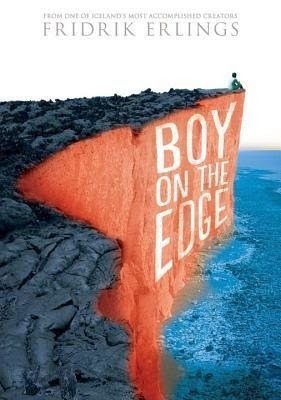
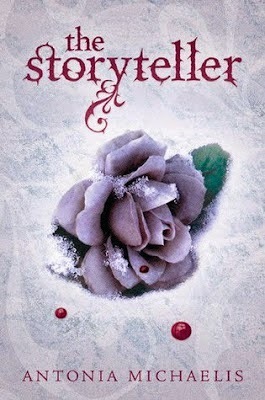
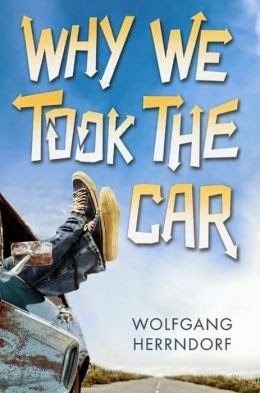
Boy On The Edge by Fridrik Erlings: Henry has a clubfoot and he is the target of relentless bullying. One day, in a violent fit of anger, Henry lashes out at the only family he has-- his mother. Sent to live with other troubled boys at the Home of Lesser Brethren, an isolated farm perched in the craggy lava fields along the unforgiving Icelandic coast, Henry finds a precarious contentment among the cows. But it is the people, including the manic preacher who runs the home, who fuel Henry's frustration and sometimes rage as he yearns for a life and a home. Author Fridrik Erlings offers a young adult novel that explores cruelty and desperation, tenderness and remorse, but most importantly, kindness and friendship.
** This book isn't technically in translation. Erlings wrote the book in English, based off the original he had written in Icelandic. But I'm including it because it's too neat not to.
The Storyteller by Antonia Michaelis, German, translated by Miriam Debbage: Wealthy, seventeen-year-old Anna begins to fall in love with her classmate, Abel, a drug dealer from the wrong side of town, when she hears him tell a story to his six-year-old sister, but when his enemies begin turning up dead, Anna fears she has fallen for a murderer.
Why We Took The Car by Wolfgang Herrndorf, German, translated by Tim Mohr: Mike Klingenberg is a troubled fourteen-year-old from a disfunctional family in Berlin who thinks of himself as boring, so when a Russian juvenile delinquent called Tschick begins to pay attention to him and include Mike in his criminal activities, he is excited--until those activities lead to disaster on the autobahn.
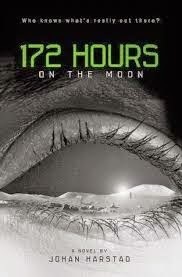

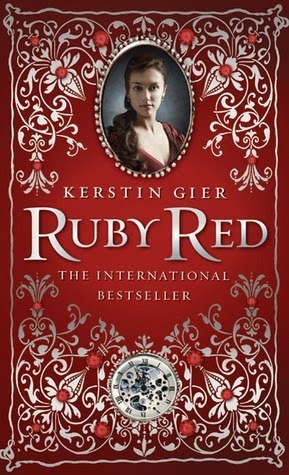
172 Hours On The Moon by Johan Marstad, Norwegian, translated by Tara F. Chace: In 2019, teens Mia, Antoine, and Midori are selected by lottery to join experienced astronauts on a NASA mission to the once top-secret moon base, DARLAH 2, while in a Florida nursing home, a former astronaut struggles to warn someone of the terrible danger there.
are u 4 real? by Sara Kadefors, Swedish, translated by Tara F. Chace: After meeting "online" in an Internet chat room and helping each other deal with family problems, Kyla and Alex, two very different sixteen year olds, decide to meet in person.
Ruby Red series by Kerstin Gier, German, translated by Anthea Bell: Sixteen-year-old Gwyneth discovers that she, rather than her well-prepared cousin, carries a time-travel gene, and soon she is journeying with Gideon, who shares the gift, through historical London trying to discover whom they can trust.
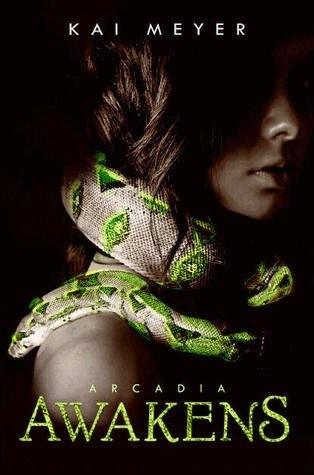
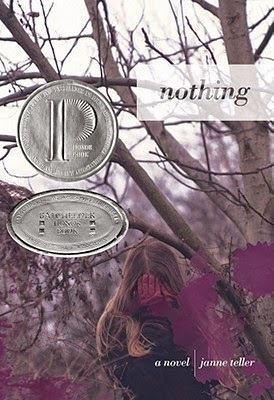
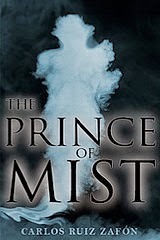
Arcadia Awakens series by Kai Meyer, German, translated by Anthea Bell: When seventeen-year-old Rosa Alcantara travels from her native Brooklyn to her ancestral home in Sicily, she falls head over heels for Alessandro Carnevare, whose family is the sworn enemy of hers, and must confront both of their families' criminal--and paranormal--pasts.
Nothing by Janne Teller, Danish, translated by Martin Aitken: When thirteen-year-old Pierre Anthon leaves school to sit in a plum tree and train for becoming part of nothing, his seventh grade classmates set out on a desperate quest for the meaning of life.
The Prince of Mist by Carlos Ruiz Zafon, Spanish, translated by Lucia Graves: In 1943, in a seaside town where their family has gone to be safe from war, thirteen-year-old Max Carver and sister, fifteen-year-old Alicia, with new friend Roland, face off against an evil magician who is striving to complete a bargain made before he died.
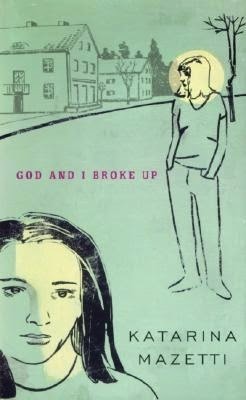
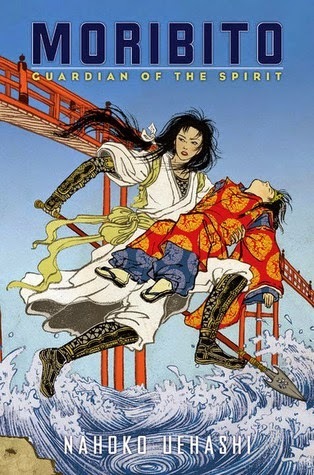
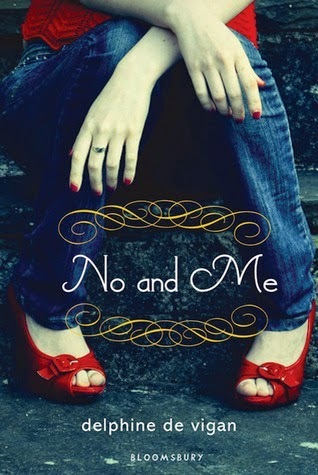
God And I Broke Up by Katarina Mazetti, Swedish, translated by Maria Lundin: Linnea is sixteen and when she meets Pia, she feels like she has finally found a friend. But now Pia is dead and Linnea struggles to understand the loss.
Moribito: Guardian of the Spirit series by Nahoko Uehashi, Japanese, translated by Cathy Hirano: The wandering warrior Balsa is hired to protect Prince Chagum from both a mysterious monster and the prince's father, the Mikado.
No and Me by Daphine de Vigan, French, translated by George Miller: A novel about two very different teenagers and the true nature of homelessness.
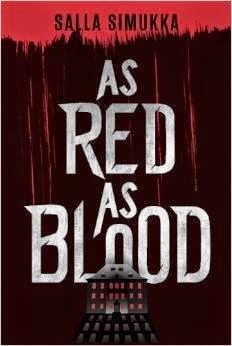
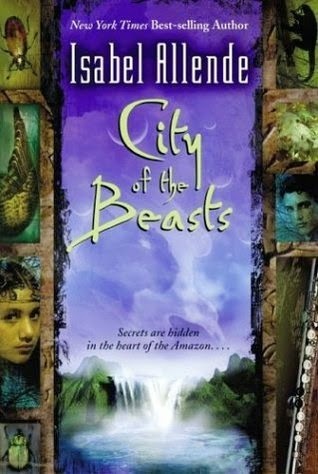
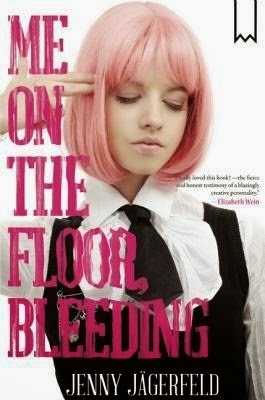
As Red As Blood series by Salla Simukka, Finnish, translated by Owen Witesman: In the midst of the freezing Arctic winter, seventeen-year-old Lumikki Andersson walks into her school's darkroom and finds a stash of money splattered with someone's blood. She is swept into a whirlpool of dangerous encounters with dirty cops and a notorious drug kingpin as she helps to trace the origin of the cash.
City of the Beasts series by Isabel Allende, Spanish, translated by Margaret Sayers Peden: When fifteen-year-old Alexander Cold accompanies his individualistic grandmother on an expedition to find a humanoid Beast in the Amazon, he experiences ancient wonders and a supernatural world as he tries to avert disaster for the Indians.
Me On The Floor Bleeding by Jenny Jagerfeld, Swedish, translated by Susan Beard: Highschool-outsider Maja would never hurt herself on purpose as her dad, teachers, and classmates seem to believe. Can't a person saw off the tip of her thumb without everyone starting to worry? That is, everyone except Maja's mum, who worringly seems to have disappeared from the face of earth. Crashing a neighbour's party, Maja meets twenty-year-old Justin Case, a super-verbal car mechanic with pink pants, who makes her forget everything about absent mothers and sawn-off thumbs, at least temporarily. But then Maja hacks into her father's email account and reads an email that hurts more than all the electric saws in the world.
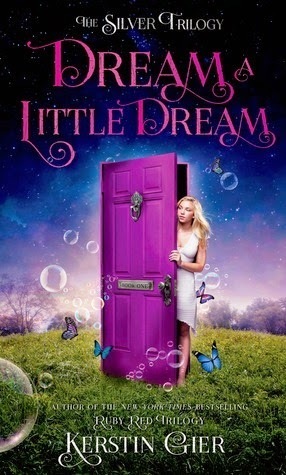
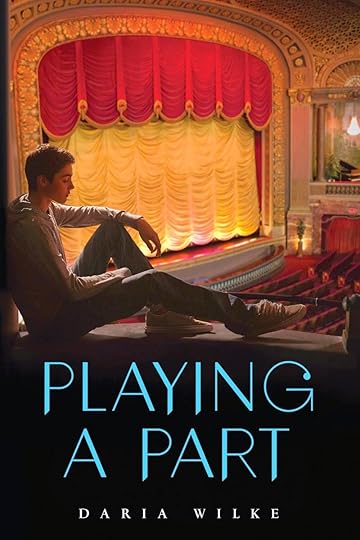
Dream A Little Dream series by Kerstin Gier, coming January 2015, German, translated by Anthea Bell: Liv Silver, fifteen, has lived in six countries in eight years and she and her sister yearn for a real home and normalcy, but soon after moving in with her mother's boyfriend in London, Liv's dreams turn bizarre, filled with talking stone statues, mysterious corridors, and strange rituals conducted by four boys who happen to be her new classmates.
Playing A Part by Daria Wilke, Russian, translated by Marian Schwartz, coming March 31, 2015: In June 2013, the Russian government passed laws prohibiting "gay propaganda," threatening jail time and fines to offenders. That same month, in spite of these harsh laws, a Russian publisher released Playing a Part, a young adult novel with openly gay characters. It was a brave, bold act, and now this groundbreaking story has been translated for American readers. Grisha adores everything about the Moscow puppet theater where his parents work, and spends as much time there as he can. But life outside the theater is not so wonderful. The boys in Grisha's class bully him mercilessly, and his own grandfather says hateful things about how he's not "masculine" enough. Life goes from bad to worse when Grisha learns that Sam, his favorite actor and mentor, is moving: He's leaving the country to escape the extreme homophobia he faces in Russia. (Description via Goodreads).







 Related StoriesGabi, A Girl in Pieces by Isabel QuineteroPut a Moon on It: The Moon on YA Book CoversPlagues & Epidemics
Related StoriesGabi, A Girl in Pieces by Isabel QuineteroPut a Moon on It: The Moon on YA Book CoversPlagues & Epidemics
Published on November 02, 2014 22:00
This Week in Reading: Volume VIII
It's been two weeks since the last update, so there are a lot of new books that showed up in my house. I think this is everything I still have hanging around. I know I've already returned Amity by Micol Ostow and 100 Sideways Miles by Andrew Smith, both of which I blew through in the last week (and both were enjoyable -- I'll write more about each in a big roundup soon).
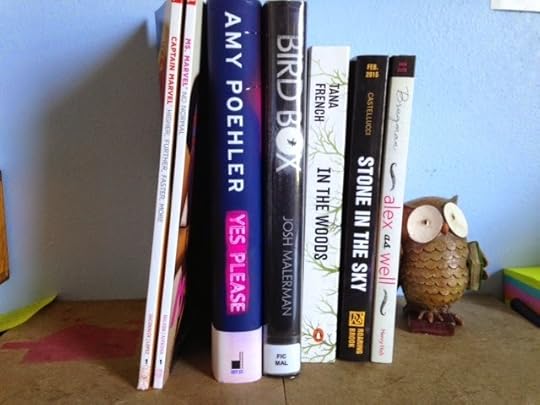
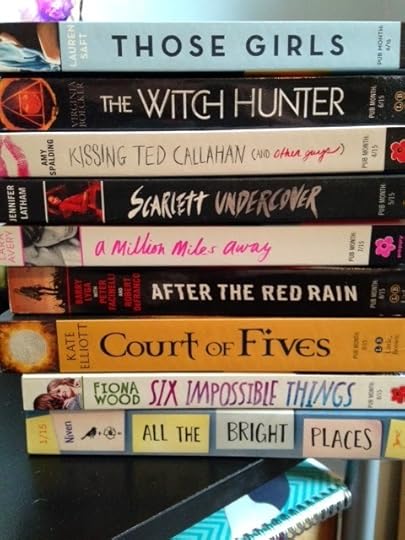
Here's what I've purchased/received/checked out/bought in the last couple of weeks:
Captain Marvel: Volume 1 by Kelly DeConnick
Ms. Marvel: Volume 1 by G. Willow Wilson -- This was great and I can't wait to keep up with this series.
Yes Please by Amy Poehler -- The hardcover edition of this is so nice. The print quality, the paper, the design, everything is really lovely. The book itself was great, too. I love how much Poehler celebrates and encourages other women.
Bird Box by Josh Malerman
In The Woods by Tana French
Stone in the Sky by Cecil Castellucci (February 24) -- I'm eager to read this duology all at once.
Alex As Well by Alyssa Bergman (January 20)
Those Girls by Lauren Saft (June 9)
The Witch Hunter by Virginia Boecker (June 2)
Kissing Ted Callahan (And Other Guys) by Amy Spalding (April 14) -- I got to read this one early and I loved it. It might be my favorite Amy Spalding title to date.
Scarlett Undercover by Jennifer Latham (May 19) -- I am so looking forward to this one.
A Million Miles Away by Lara Avery (July 7)
After The Red Rain by Barry Lyga, Peter Facinelli, and Rob DeFranco (August 4)
Court of Fives by Kate Elliot (August 18) -- This is pitched as (wait for it) Game of Thrones meets Hunger Games meets Little Women, which means...absolutely nothing to me.
Six Impossible Things by Fiona Wood (August 11) -- I loved Wildlife and can't wait to read the companion novel.
All The Bright Places by Jennifer Niven (January 8) -- This is getting a massive push and I've seen some good reviews, but can we knock off the Eleanor & Park meets The Fault In Our Stars thing? Because that's actually a turn off for me.
Currently Reading:
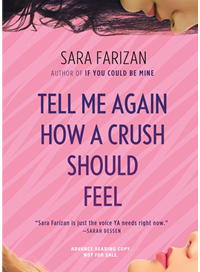
I started Sara Farizan's Tell Me Again How A Crush Should Feel last night and while it's imperfect -- there's weirdly timed info-dumping and not all of that info feels consistent -- the voice is young and sweet, and I love that the main character is Iranian and working through how to best express her sexuality. This is lighter reading, which I am really in the mood for right now.
Around the Web:
Have you donated or spread the word about the We Need Diverse Books Indiegogo campaign? I made a contribution, and I have loved watching them grow closer and closer to their 100K goal. I really liked Robin Talley's top 7 LGBTQ YA novels featuring main characters of color.
At Kid Lit Con in early October, Hannah Gomez talked about the different types of bloggers that are out there. Here's a nice infographic she made sharing those "types."Over at Book Riot, Alison put together a really nice list of YA books about or featuring LGBTQ characters, both frontlist and backlist. I've been reading like crazy the last month or so. I think I was finishing a book every other day in October. I wanted to get through as much horror as possible, and because of all the reading, I decided I wouldn't pressure myself to write up reviews of everything. If you're curious about what I read in horror -- some YA and some adult -- here's a visual peek on my Tumblr. After I posted it, I realize I didn't add Rachel Klein's The Moth Diaries. That was a better read than it was a movie, for sure.






 Related StoriesThis Week in Reading: Volume VIIThis Week in Reading: Volume VIThis Week in Reading: Volume 5
Related StoriesThis Week in Reading: Volume VIIThis Week in Reading: Volume VIThis Week in Reading: Volume 5


Here's what I've purchased/received/checked out/bought in the last couple of weeks:
Captain Marvel: Volume 1 by Kelly DeConnick
Ms. Marvel: Volume 1 by G. Willow Wilson -- This was great and I can't wait to keep up with this series.
Yes Please by Amy Poehler -- The hardcover edition of this is so nice. The print quality, the paper, the design, everything is really lovely. The book itself was great, too. I love how much Poehler celebrates and encourages other women.
Bird Box by Josh Malerman
In The Woods by Tana French
Stone in the Sky by Cecil Castellucci (February 24) -- I'm eager to read this duology all at once.
Alex As Well by Alyssa Bergman (January 20)
Those Girls by Lauren Saft (June 9)
The Witch Hunter by Virginia Boecker (June 2)
Kissing Ted Callahan (And Other Guys) by Amy Spalding (April 14) -- I got to read this one early and I loved it. It might be my favorite Amy Spalding title to date.
Scarlett Undercover by Jennifer Latham (May 19) -- I am so looking forward to this one.
A Million Miles Away by Lara Avery (July 7)
After The Red Rain by Barry Lyga, Peter Facinelli, and Rob DeFranco (August 4)
Court of Fives by Kate Elliot (August 18) -- This is pitched as (wait for it) Game of Thrones meets Hunger Games meets Little Women, which means...absolutely nothing to me.
Six Impossible Things by Fiona Wood (August 11) -- I loved Wildlife and can't wait to read the companion novel.
All The Bright Places by Jennifer Niven (January 8) -- This is getting a massive push and I've seen some good reviews, but can we knock off the Eleanor & Park meets The Fault In Our Stars thing? Because that's actually a turn off for me.
Currently Reading:

I started Sara Farizan's Tell Me Again How A Crush Should Feel last night and while it's imperfect -- there's weirdly timed info-dumping and not all of that info feels consistent -- the voice is young and sweet, and I love that the main character is Iranian and working through how to best express her sexuality. This is lighter reading, which I am really in the mood for right now.
Around the Web:
Have you donated or spread the word about the We Need Diverse Books Indiegogo campaign? I made a contribution, and I have loved watching them grow closer and closer to their 100K goal. I really liked Robin Talley's top 7 LGBTQ YA novels featuring main characters of color.
At Kid Lit Con in early October, Hannah Gomez talked about the different types of bloggers that are out there. Here's a nice infographic she made sharing those "types."Over at Book Riot, Alison put together a really nice list of YA books about or featuring LGBTQ characters, both frontlist and backlist. I've been reading like crazy the last month or so. I think I was finishing a book every other day in October. I wanted to get through as much horror as possible, and because of all the reading, I decided I wouldn't pressure myself to write up reviews of everything. If you're curious about what I read in horror -- some YA and some adult -- here's a visual peek on my Tumblr. After I posted it, I realize I didn't add Rachel Klein's The Moth Diaries. That was a better read than it was a movie, for sure.







 Related StoriesThis Week in Reading: Volume VIIThis Week in Reading: Volume VIThis Week in Reading: Volume 5
Related StoriesThis Week in Reading: Volume VIIThis Week in Reading: Volume VIThis Week in Reading: Volume 5
Published on November 02, 2014 08:11
October 30, 2014
This Week at Book Riot
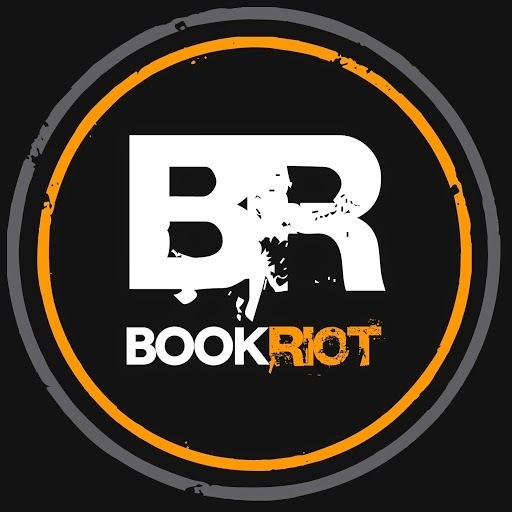
Here's a look at this week over at Book Riot . . .
If you are a bit of a language and grammar nerd, this one's for you. I. If you've ever wondered why job and Job are pronounced differently or why words like replace can have two definitions that are the exact opposite of one another. For this week's "3 On A YA Theme" post, I talked about not 3, but 6, YA books that feature at least one scene set on Halloween.







 Related StoriesThis Week at Book RiotThis Week at Book Riot . . .
Related StoriesThis Week at Book RiotThis Week at Book Riot . . .
Published on October 30, 2014 22:00
October 29, 2014
Guest Post: Victoria Signorelli and Kathleen Willard of Gay YA

It's not often we do guest posts for people who aren't authors. But today's guest post, from Vee Signorelli and Kathleen Willard, is one I am so excited to share. If those names don't sound familiar to you, maybe their blog does. These two ladies -- teenagers -- run GayYA.org. This is an incredible resource of book reviews, book lists, and discussions about all things relating to LGBTQIA+ in YA, and it's one that I turn to regularly. If it's not on your reading radar already, it should be.
Let me reiterate that the two minds behind this site, as well as its Tumblr and Twitter accounts, are teenagers. Their work and their insight into YA is keen and thoughtful, and I had to ask them to come talk about why they started the site, what they offer up on the site, books that have impacted them, and more.
**
One night in May of 2011, Jessica Verday announced to the internet why she’d pulled out of the anthology Wicked Pretty Things: one of the editors said they would not include her piece unless she changed her m/m pairing to an m/f one. The internet exploded. A #YesGayYA hashtag formed on Twitter. Hundreds of blog posts went up. People came out of the woodwork to talk about similar experiences, and to promote LGBT YA. My older sister and I were both scrolling through our Twitter feeds the night of this announcement. We ushered each other over to read stories of characters being “straightened” by publishers/editors/agents who didn’t think they would sell, or someone explaining why they needed LGBT YA. We both saw the same thing: tons of people calling out for representation, with no way to reach publishers, agents, and editors, and nothing to connect them to each other. To this day, we don’t know who said it. But it was announced, “someone really needs to make a website on all of this stuff.” We looked at each other over the top of our computer screens.
“are you…”
“thinking…?”
“Yes!”
“SAME.”
We realized there was a huge demand for representation of the people, and no one organizing to talk about it past some hashtags on Twitter. We were only sixteen and twelve at the time, but it wasn’t even really a question in our minds: we knew how to do websites, and we knew social media.
We both identified as straight at the time (ha ha), and we really knew nothing about the LGBTQ community. To be honest, we were probably the least qualified people to do the job. But, we had the time and the passion and the knowledge of websites to be able to do it. We made many mistakes: calling a pairing of two bisexual guys “gay” when it should’ve been M/M, using “gay” as an umbrella term for the entire LGBTQIA+ community, and generally just being the most clueless people in the world. It was a learning curve, but once we realized we were not the ones who needed to do the speaking, we got out of the way.
We got some great posts on our site, and many wonderful and rich conversations going. We both enjoyed it, and put a good amount of time into it. But there was only so much effort two presumably straight teens could put into something like this— we were convinced that all LGBT lit was dreary and full of angst, and the words “the problem is, it’s just not good” were muttered frequently. We had no over-arcing vision for the site, and were really getting nothing out of it, except getting to talk to some authors who we were convinced wrote solely angst. So after about two years, we abandoned our site. It was partially due to issues at home, but the site had started to drag on us. If it had been something we were still incredibly passionate about, I don’t think we would’ve let it go.
It didn’t really look like it would ever get going again, especially after my sister headed off to college.
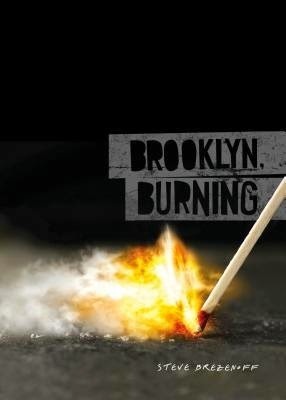 Then, this past winter when I turned sixteen, I went through a process of figuring out my own identity. It was an extremely hard time for me, as I had never heard of either non-binary genders or pansexuality and it took me a long time to realize that they fit me. During this time, I found such solace in books. Beautiful Music for Ugly Children by Kirstin Cronn-Mills really opened up the door to self discovery, because Gabe, the MC was trans and happy. I had the same thing with The Realm of Possibility by David Levithan which made me feel like however I identified would be accepted. And Far From You by Tess Sharpe, which made me feel OK about my attraction to girls. Eventually, I figured out what my identity was through tumblr (non-binary and pansexual), but I got the humanity and the ability to discard shame from books. I remember the first time I held in my hands a book that had me in it (which was Brooklyn, Burning by Steve Brezenoff)-- a book that had a happy ending. Every time I was told that people like me didn’t exist, every time I started to believe that I would never be happy, I had something physical to cling to that proved to me I really was here, that I had a chance at a good life.
Then, this past winter when I turned sixteen, I went through a process of figuring out my own identity. It was an extremely hard time for me, as I had never heard of either non-binary genders or pansexuality and it took me a long time to realize that they fit me. During this time, I found such solace in books. Beautiful Music for Ugly Children by Kirstin Cronn-Mills really opened up the door to self discovery, because Gabe, the MC was trans and happy. I had the same thing with The Realm of Possibility by David Levithan which made me feel like however I identified would be accepted. And Far From You by Tess Sharpe, which made me feel OK about my attraction to girls. Eventually, I figured out what my identity was through tumblr (non-binary and pansexual), but I got the humanity and the ability to discard shame from books. I remember the first time I held in my hands a book that had me in it (which was Brooklyn, Burning by Steve Brezenoff)-- a book that had a happy ending. Every time I was told that people like me didn’t exist, every time I started to believe that I would never be happy, I had something physical to cling to that proved to me I really was here, that I had a chance at a good life. But I also ran into a lot of difficulty: because most people don’t even know people like me exist, I can count on one hand the books that have non-binary people in them. And I had the resources to be able to find them. I understood more than ever the importance of not only queer YA, but the service I had an opportunity to provide through GayYA.org.
I realized that there were a lot of teens out there like me, looking for themselves in books. And I realized I had a chance to really help them out. So, this March, I decided to start it back up. For the first time since we began, I had a vision and purpose.
Kathleen:
I never “figured out” that I was gay, as so many people do later in life. I knew from the beginning. I thought girls were the bomb. I had a substantial crush on Daphne from Scooby Doo. I also thought that something was horribly wrong with me--that I was wrong, and needed to be fixed--because I did not know that queer people existed.
Representation is pretty important to me.
I don’t know exactly when I figured out that there is a word for what I am, but it hit me somewhere around age nine, watching Willow and Tara become a couple in Joss Whedon’s Buffy the Vampire Slayer.
At age eleven, I came out to my parents, and while they were really surprised, they also really didn’t care who I fell in love with as long as I was happy. The notion that Gay is OK grew and grew in my mind; it cautiously morphed into pride, then bloomed into lesbian feminist rants, and the rest is history.
Flash forward six years and picture an angst-ridden teen riding the bus with a cup of coffee in her hand, wearing enough black clothing and red lipstick and false confidence to be mistaken for a widow spider, while simultaneously searching her person for her bus pass. That’s me.

I have known Vee and Maria, the founders of Gay YA, for years and years; I witnessed the growth of Maria’s first fansite, an homage to Melissa Marr’s Wicked Lovely Series, and the birth of Gay YA.
Early this spring, Vee decided to singlehandedly reboot Gay YA after a dormant period. One day, as I was presumably sipping on tea and V was working on Gay YA’s Tumblr, she said, “What have I done?! I have so much to do!” And I said, “I can do that for you if you want.” She handed me the laptop. This happened several times with several tasks over a period of several months.
In early summer, I said: “Have I become your co-conspirator?”
And she said: “Yeah, if you wanna be.”
I did.
Helping to run Gay YA started out as a cool hobby to promote something very close to my heart; it has become something much bigger and a little bit scary. After running our social media and receiving positive feedback, I realized that I have stumbled backwards into the opportunity to support--even help?!--queer youth just like me, who are looking for themselves on the page.
Vee:
Very frequently, my parents will ask me with a twinge of hope in their voices if I’ve ever rethought getting into this-- they still think I’m a straight girl. “No,” I respond with a smile. “Not at all.”
Although my workload is huge and overwhelming and growing every day, re-booting this site has lead to some of the most amazing experiences in my life. I live in Minnesota, which is secretly one of the coolest states in the country (especially in a literary sense). I’ve gotten to meet some of my favorite authors, usually through events at the Loft Literary Center, or Addendum Books. Though it still terrifies me to go up and squeak at them, I now have something I can say. We’ve even gotten to interview some of our favorite authors (like Francesca Lia Block!!).
And we’ve been able to make a difference for teens and adults looking for representation. The last few years have been HUGE for queer YA books— the representation is out there! It’s just hard to find. And we have been able to collect a thorough knowledge of all the titles, and are able to recommend exactly what people are looking for. We’re far from becoming the exhaustive resource that I have my eye set on, but we’re getting closer by the day.
Kathleen:
In the last few months, we have been spectators to the site’s explosion (in a good way). There has been an influx of posts, followers, questions, and general publicity to the point that that between the two of us, it is a daily struggle to keep everything running smoothly. Part of the struggle is financial: we each contribute 2-10 hours to the site on any given day (in addition to keeping up with a high school education), for which we are not paid. For me, this is in addition to a part-time job; for Vee, it means giving up having a job at all. Our operating costs add up to approximately $100/month, which is a LOT when you’re taking from one part-time job and a $40 allowance.
I recently added a donation button to the site-- anything is greatly appreciated: 50 cents to $50.
Although something like 50 cents seems like nothing, it really helps us a lot.
Vee:
We have a number of new things happening with our site. We are currently are accepting (until the end of October) applications to become a regular contributor to our site.
We’re also looking to gather a small group of dedicated volunteers to help us with some small but essential tasks, so we can continue tackling the big picture things. We’re completely strung out with everything we’ve got going on now, because it all just sort of happened, and had no grasp on the amount of work it would all take. We have a lot of cool project ideas running around our heads, but no time to enact them, because of all the day-to-day emergencies we have to keep up with. Volunteer help is essential to keeping this community and project moving forward. See here for more information!
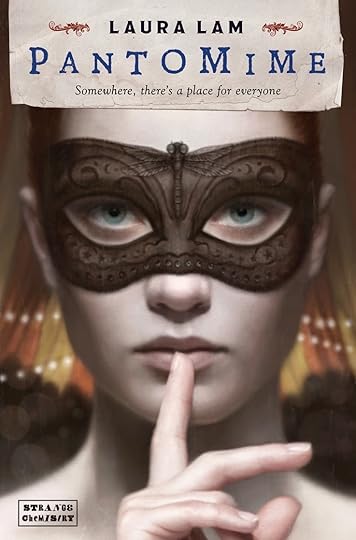 I’ve had the opportunity of working with Nita Tyndall on GayYA’s Masterlist Project. We’ve made a wiki and are cultivating a three pronged project to help people looking for queer YA find exactly what they’re looking for. It’s entirely community driven, and we’d love it if you joined us!
I’ve had the opportunity of working with Nita Tyndall on GayYA’s Masterlist Project. We’ve made a wiki and are cultivating a three pronged project to help people looking for queer YA find exactly what they’re looking for. It’s entirely community driven, and we’d love it if you joined us!We just started up our first book club, and we’re reading Pantomime by Laura Lam. Check out the schedule and how you can participate!
We also have continual opportunities for authors, teens, and everyone else. And if you have an idea for something you’d like to work on with us, or have a question, comments, or anything else, my email is always open at victoria@gayya.org.
We’re really looking forward to expanding this website in new and awesome ways, and we hope that you’ll join us!







 Related StoriesGuest Post: Fiona Woods on Female Sexuality in YA FictionHow to Relationship -- Guest Post by Corey Ann HayduGabi, A Girl in Pieces by Isabel Quinetero
Related StoriesGuest Post: Fiona Woods on Female Sexuality in YA FictionHow to Relationship -- Guest Post by Corey Ann HayduGabi, A Girl in Pieces by Isabel Quinetero
Published on October 29, 2014 22:00
October 28, 2014
Review & Giveaway: Loop by Karen Akins
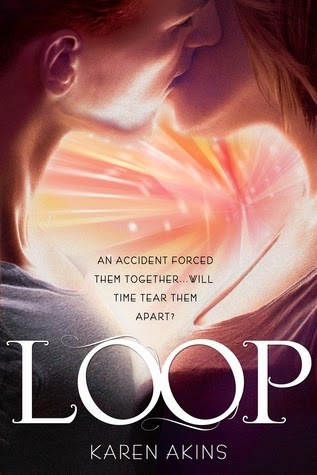 Bree Bennis attends a school for Shifters, those who were born with the ability to travel backwards in time. Her goal at the book’s opening is to travel to the 21st century, complete her midterm, and carry out a little side project that will earn her the money to ensure her sick mother is able to get the care she needs. It should be doable, except that Bree runs into a bratty kid named Finn and accidentally takes him hostage while trying to complete her tasks. Oops.
Bree Bennis attends a school for Shifters, those who were born with the ability to travel backwards in time. Her goal at the book’s opening is to travel to the 21st century, complete her midterm, and carry out a little side project that will earn her the money to ensure her sick mother is able to get the care she needs. It should be doable, except that Bree runs into a bratty kid named Finn and accidentally takes him hostage while trying to complete her tasks. Oops. She eventually escapes the 21st century and goes back to her home time, the 23rd century, knowing she’ll have to return to the 21st to somehow convince Finn not to talk about her little visit. Only when she does return, she lands three years later, and Finn is no longer a bratty kid. He’s her age, he’s pretty hot, and he claims to have been in a relationship with her for some time. It doesn’t take long to figure out he means a future version of Bree. Of course, he can’t tell her about her own future, for fear of disrupting the timeline. (Picture River Song saying “Spoilers” to the Doctor here.) In true Bree fashion, in trying to extricate herself from this situation, she accidentally brings Finn along with her to the 23rd century, something that shouldn’t even be possible. Oops again.
Now Bree must unravel not only how to return Finn to his own time without anyone the wiser, but also how exactly he came to know future Bree so well, and what it all has to do with the strange things going on in her boarding school.
Karen Akins’ debut Loop really embraces how fun time travel can be. This is a time travel book for readers who love time travel. Do you have certain websites bookmarked whose sole purpose is to speculate on the possibility of time travel? This book is for you. This is a true speculative novel, one that continuously asks what if. What if we could time travel? What would the rules be? What would the consequences be? For readers who love those kinds of questions, this is a gem. For readers who get headaches thinking about it, it might be best to pick up a different book.
It’s not just the time travel that makes this book so much fun. Bree and Finn have great snarky chemistry, and there’s a slew of futuristic 23rd century technology that is fascinating to read about. The 23rd century feels real, chock full of fun little details and new slang terms. The plot itself is fast-paced and complicated, but makes sense in the end, as good time travel books should. Often when I read a book with multiple moving plot parts, I’m a little hesitant to reach the end; I’ve been burned with unresolved subplots and details left dangling before (seemingly unintentionally). This is especially true for time travel stories, which can be more complicated than most. Trust in Akins – it all comes together in a satisfying way.
St. Martin's Press is giving away a finished copy of Loop to one lucky reader (US residents only). Enter using the form below. The giveaway closes November 14.
Loading...







 Related StoriesA Few Cybils Reads - Part IIIGabi, A Girl in Pieces by Isabel QuineteroOctober is...
Related StoriesA Few Cybils Reads - Part IIIGabi, A Girl in Pieces by Isabel QuineteroOctober is...
Published on October 28, 2014 22:00



